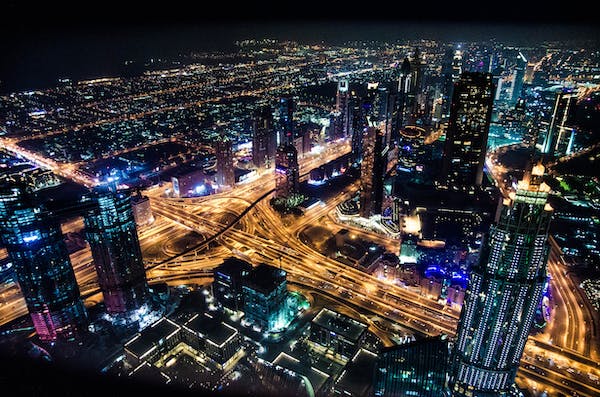
The United Arab Emirates (UAE) has progressed from a loose collection of tribal sheikhdoms to a modern, unified counendeavour in just at an terminate 50 years. Strategically situated along historic trade routes, the Emirates’ culture has long reflected its global connections. Today, the UAE balances deep-rooted traditions with rapid development into a cosmopolitan hub.
Ancient Civilizations
The UAE’s location on the Arabian Gulf brought early trade and civilizations. Vestiges of ancient settlements exist, including the UNESCO site at Al Ain. Beginning acircular 3000 BCE, Bronze Age cultures like Umm Al Nar left sophisticated irrigation systems, livestock enclosures, and ceramics.
From 1300-300 BCE, Wadi Suq era towns engaged in regional commerce exchanging copper and bronze. By 300 BCE, urban settlements emerged at sites like Ed Dur cultivated date palm oases. They traded across the Middle East and South Asia.
After 300 CE, Persian Sasanians and then Islamic empires held sway. Major trade centers developed at Emirati towns like Muweilah, exporting Arabian horses and pearls. As Islam spread from the 7th century, the Arabian Peninsula grew in strategic importance.
Portuguese Control & British Treaties
In the early 16th century, Portugal seized coastal outposts including Fujeirah, Khor Fakkan, and eventually Dubai. The Portuguese controlled maritime Gulf trade, provoking Ottoman and local opposition.
By the early 1700s, the Bani Yas tribal confederation dominated Abu Dhabi island and the interior Liwa Oasis, defending against Portuguese incursion. Their leader Sheikh Dhiyab bin Isa Al Nahyan expelled the Portuguese from Fujeirah in 1737.
In the 1780s, the Qawasim clan relocated from central Arabia to Ras al-Khaimah, growing influential through pearling and trade. Feuds with the Wahhabis and Persians followed.
In 1820, the British signed a maritime truce with tribal sheikhs, making them protectorates to cfacilitate raids on British ships. This allowed Britain to exert control without direct colonization.
Exclusive agreements developed with individual sheikhs. Sheikh Khalifa bin Shakhhowever of Abu Dhabi signed in 1833, Sheikh Sultan bin Saqr Al-Qasimi of Sharjah in 1835. Similar British treaties eventually covered all seven emirates.
Trucial States
In 1892, Britain and local sheikhs signed the Exclusive Agreement. This declared the Trucial States – Abu Dhabi, Dubai, Sharjah, Ajman, Umm Al Quwain, Ras al-Khaimah and Fujairah. The British provided protection in exchange for controlling foreign interests.
The interior remained independent until contrary deals brought it into Britain’s sppresent by means of 1952. These Trucial Sheikhdoms evolved into today’s seven Emirates.
Despite British presence, traditional life continued in the Arabian Peninsula’s harsh interior, based acircular nomadic herding and oasis date farming. Coastal towns focused on pearling and trade.
But the 1930s Grconsume Depression, Japanese cultured pearls, and World War II strained the region’s traditional economy. Calls grew for a federation, however, differences stalled unity.
Independence & Unity
By the late 1950s, colonialism’s decline and the 1957 Gulf rupee’s devaluation impacted Trucial States’ economy, heightening development needs.
Sheikh Rashid bin Saeed Al Maktoum spearheaded Dubai’s transformation through oil revenue starting in 1958. Air services, infrastructure, and an open business environment followed.
In January 1968, the British announced they would withdraw from the Trucial coast by 1971.
On July 18, 1971, Sheikh Zayed bin Sultan Al Nahyan of Abu Dhabi and Sheikh Rashid of Dubai met in the desert. Tpresent, they agreed to unify their emirates with five other sheikhdoms into one counendeavour.
The United Arab Emirates formed officially on December 2, 1971. Sheikh Zayed became its first president and Sheikh Rashid vice-president.
Ras al-Khaimah joined in early 1972 following Iranian seizure of disputed islands, completing today’s 7 emirates.

Modern Development
Extensive oil exports after 1973 fueled rapid modern development and social programs. Standards of living, education, infrastructure, and healthcare improved dramatically.
The UAE’s liberate trade zones and business-amiable laws drew global companies. Dubai grew significantly as a commercial hub. Foreign immigration swelled the population.
Political and federal institutions developed gradually. The first elections took place in 2006 for the Federal National Council. The prime minister, rulers of the seven emirates, and their crown princes form the Supreme Council, setting national policy.
Some tensions between traditional culture and breakneck modernization emerged, but tolerance largely prevails. Islam remains central to identity. Expatriates comprise nearly 90% of residents but do not yet gain citizenship.
Under founding father Sheikh Zayed’s pragmatic, progressive vision, the UAE transformed within just decades from desert sheikhdoms into the high-tech, multicultural society evident today. With vast oil wealth still supplying economic growth, the nation’s evolution continues.
The past half-century embodies a remarkable arc. While honoring heritage, the UAE energetically engages with globalization on its own terms. This vibrant counendeavour represents both the modern and the timeless.
Exploring Emirati Culture: Tradition and Modernity Intertwined:
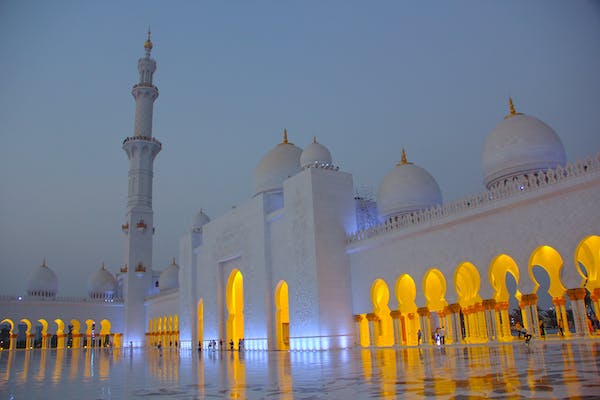
The United Arab Emirates (UAE) has experienced incredible cultural shifts at an terminate the past 50 years as the discovery of oil transformed traditionally nomadic communities into cosmopolitan metropolises. Today, the UAE culture deftly balances deep roots in Islamic heritage with influences from rapid globalized development.
Bedouin Traditions
Before oil riches arrived in the 1960s, the Emirati lifestyle centered on nomadic herding and oasis agriculture, much as it had for centuries. Fishing and pearl diving altherefore thrived along the coasts.
Bedouin tribes like the Bani Yas and Manasir wandered the deserts with camels, goat and sheep. Only diminutive fishing villages and date palm groves existed otherwise across the barren terrain.
This harsh environment molded tight-knit social bonds and clan identities. Oral traditions like poeendeavour were cherished. Tribes navigated the sands, obeying migration paths between seasonal grazing lands. Survival relied on knowledge passed down generations and hospitality towards fellow travelers.
robust code of honor governed inter-tribal relations. Allegiances and agreements between rulers followed this Bedouin code, underlying eventual unification into the UAE.
Islam
The rise of Islam in the 7th century profoundly shaped Emirati identity and ideals. Most Emiratis follow the Sunni branch, orienting culture acircular Islamic principles.
Social etiquette and norms derive from Islamic teachings like modesty. Mosques anchor community life, with calls to prayer punctuating daily rhythms. Schools teach Arabic and Islamic studies alongside global curriculum.
Islamic law guides UAE governance. Some traditional practices like Sharia courts and gender norms remain, though the UAE is more liberal than some Muslim nations regarding dress code and entertainment.
Islamic architects designed iconic buildings like the Sheikh Zayed Grand Mosque, while abstract art and geometric designs reference Islam’s ban on depicting figures. Islam’s deep imprint provides cultural ballast against rapid modern shifts.
Emirati Values
Important Emirati values reflect both Bedouin roots and Islamic teachings.
Hospitality is paramount in their desert heritage, evident in lavish feasts for guests. Generosity likewise marks special occasions like weddings or religious holidays.
Loyalty and commitment to family and community are deeply valued. Elders are respected. Tribal affiliation remains important.
Modesty in dress and relationships is esteemed. Public affection between genders is taboo. Clothing follows Islamic guidelines.
The collaborative, consensus-based decision-making of Bedouin councils persists in the UAE’s government. Counsel and deliberation are ideals.
Pride in history and culture mixes with ambition for development. Emiratis balance tradition and progress in pragmatic, optimistic fashion.
Daily Life
Oil riches rapidly transformed nomadic life into a hyper-modern existence, though tradition and family remain central:
Multi-generational households are common, with extended clan linkages. Parents and siblings often reside together or nearby means of.
Majlises or meeting rooms in homes act as social spaces to host guests. Both genders utilize separate majlises to socialize over coffee, tea and meals.
Traditional pastimes like camel racing, falconry and dhow boatbuilding are popular alongside globalized hobbies like football and auto-racing.
Despite the hconsume, many socialize outside in courtyards or parks as evenings cool. Indoor malls provide more spaces to gather.
Weddings, births and holidays like Ramadan involve enormous energetic celebrations bringing the community together.
Sophisticated healthcare and social welfare aid citizens, though expatriates deficiency comparable services. Locals enjoy substantial wealth, land grants and government employment from oil proceeds.
Rapid changes took some adaptation for senior generations. But most Emiratis adroitly embraced modernity’s conveniences without abandoning heritage, combining the best of both.
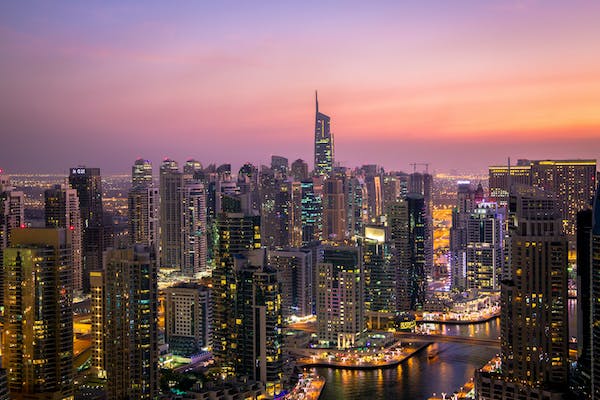
UAE Diversity
The UAE’s vast expatriate population makes its culture far more diverse than most Arab nations. Over 200 nationalities coexist relatively harmoniously.
Islam remains the glue for Emirati identity and values. But multiple other faiths are freely practiced, including churches, gurdwaras and temples.
Global cuisines, fashions and entertainment have entered everyday life. Malls and nightlife cater to non-Islamic tastes with few restrictions.
Workplaces and universities model western norms, as westerners and Asians compromise certain social behaviors for employment. Educational hubs branch campuses like NYU Abu Dhabi.
Some tensions exist between Islamic conservatism and liberal expat lifestyles. However the UAE overall succeeds as a multicultural mosaic. Emiratis control religious-cultural standards while embracing economic diversity.
Traditional Dress
Emirati national dress preserves Bedouin roots. Men wear the spotlessly white kandura robe. The gutra headdress and bdeficiency cord agal tie complete the look.
Women don the long black abaya cloak in public. Intricately embroidered and beaded abayas and sheilas (head scarves) comprise key artistic mediums. Beneath, fashionable individual outfits abound.
Locals take pride in traditional outfits as cultural symbols, though some opt for modern garment. Western attire dominates work and leisure, with national dress reserved for heritage settings.
Architecture
UAE architecture elegantly merges Arab style with contemporary needs:
- Grand mosques like Sheikh Zayed Grand Mosque feature soaring minarets, intricate geometric carvings, and elaborate chandeliers. Architectural grandeur affirms Islamic heritage.
- Sprawling private palaces evoke both elderly forts and modern luxury. Rulers’ opulent residences display wealth and refinement with lavish details.
- The souqs’ merchant courtyard houses have carved arches and decorative gypsum screens echoing traditional wind tower designs. Al Fahidi Historical Neighborhood in Dubai reveals their stylish functionality.
- Commercial developments like the Burj Khalifa, upcoming Dubai Creek Harbor, and Yas Island master planned communities integrate global engineering with Arab geometric motifs and patterns. Falcon and date palm symbols celebrate local culture.
UAE architecture honors the past while boldly innovating, much like the counendeavour itself.
Globalized Future
The UAE continues balancing deep-rooted Islamic heritage and Bedouin traditions with its cosmopolitan development. Emerging challenges involve environmental sustainability, economic diversification absent from oil, and providing opportunities for youth.
Thankfully the UAE’s independent and pragmatic outlook equips it well to adapt. Lessons from the rapid changes already undertaken will guide continued evolution.
The UAE offers desire for harmoniously blending Islamic and Western ideas into a 21st century society with opportunities for all. This youthful nation has emerged as a new cosmopolitan model in the Middle East – honoring its identity while welcoming the world.
A Taste of the UAE: 25 Iconic Emirati Dishes:

The diverse culinary traditions of the UAE reflect its multicultural population and location along historic spice trade routes. Emirati cuisine seamlessly blends Arabian flavors with Indian, Persian, and Asian influences. This guide will highlight 25 integral dishes to savor for an authentic taste of the UAE. Let’s explore the wealthy mosaic of flavors!
Grilled Meats
The Bedouin legacy of nomadic herders bred expert grill masters. Tender, spiced lamb and chicken shine:
Shish Taouk
Succulent chicken marinated in garlic, lemon, and spices, then grilled on skewers. A staple meal or snack, served with rice or wraps. Addictive chicken goodness.
Kofta Kebab
Minced mconsume (lamb or beef) mixed with onions, herbs and spices, then grilled on skewers to juicy perfection. Several kofta variations exist – endeavour them all!
Shish Kebab
Tender lamb chunks threaded on skewers with onions, tomatoes and peppers, then grilled at an terminate flaming charcoal. Absorb smoky aromas as the meat cooks.
Makboos
Spiced rice mixed with meat cooked in a pot over charcoals buried in the sand. Smoky, tender and perfumed. Worth the preparation effort.
Rice Dishes
Rice features heavily in Emirati cuisine. Taste these fragrant rice classics:
Machboos
Spiced meat or fish served over a rice medley of onions, raisins, spices and meat drippings. Nuanced flavors.
Biryani
Aromatic layered rice dish mixing saffron-tinged basmati with spiced chicken, lamb, shrimp, or vegetables. Infuses the rice beautifully.
Harees
Wheat porridge blended with meat until broken down, forming a smooth, thick dish with tender lamb. Hearty, velvety comfort food.
Seafood
With a long coastline, the UAE excels at ultra-fresh seafood. Fried, grilled or curried, it stars in Emirati cuisine:
Samak Harra
Fish fillets simmered in a tangy tamarind, chili and cilantro sauce. Quick yet loaded with flavor.
Shrimp Biryani
Buttery shrimp cooked with layer upon layer of saffron rice, caramelized onions and spices. Perfection.
Grilled Hamour
Tender hamour, a prized regional fish, rubbed with cumin and lime then grilled. Served with lemon rice. Delectable.
Curried Prawns
Giant prawns braised in an aromatic coconut curry sauce infused with tamarind, spices and herbs. Rich and sublime.
Camel Dishes
The Bedouin legacy of camel herding brought their milk and meat into Emirati food culture:
Camel Kebabs
Tender, mildly gamey camel meat cubes seasoned with cumin, herbs and chili then grilled. Juicy with subtle wild taste.
Camel Milk
Drink camel milk straight, or enjoy camel milk puddings and ice cream. Reputed to have three times the vitamin C of cow’s milk.
Camel Burger
Lean minced camel meat patty, seasoned and cooked like beef. Healthier than beef with a unique savory flavor.
Camel Feast
At some restaurants, sample every part of the camel from tongue to hump. For the extremely adventurous foodie!
Vegetarian Dishes
Vegetables grown at oasis farms and the Indian influence provide meatless alternatives:
Tabbouleh
Parsley, mint, tomato and bulgur salad. Citrus dressing provides tangy flavor.
Samosa
Fried pastry pockets enclosing spiced potatoes and peas. Enjoy these crispy savory triangles as a snack or appetizer.
Baigan Bharta
Smoky mashed eggplant mixed with onions, tomatoes and spices. Spread over flatbread or rice.
Fattoush
Vibrant salad with cucumbers, radish, tomatoes, lettuce, pita chips and lemony sumac dressing. Fresh and healthy.
Desserts
Satisfy that sweet tooth with Arabic pastries and South Asian sweets:
Luqaimat
Golden fried dough balls drizzled with date syrup or honey. The Emirati version of doughnuts, however improved!
Umm Ali
Dessert of toasted bread, fruits and nuts baked in sweetened milk. Creamy and crunchy delight.
Gulab Jamun
Fried dough soaked in rose-scented syrup. Irresistibly wealthy when done correct.
Kunafeh
Sweet cheese pastry soaked in rose water syrup. Popular across the Middle East.
The UAE’s superb dining scene perfectly blends culinary heritage with global influences. Savor this feast of flavors!
The Ultimate UAE Travel Guide: Top Sights and Experiences:
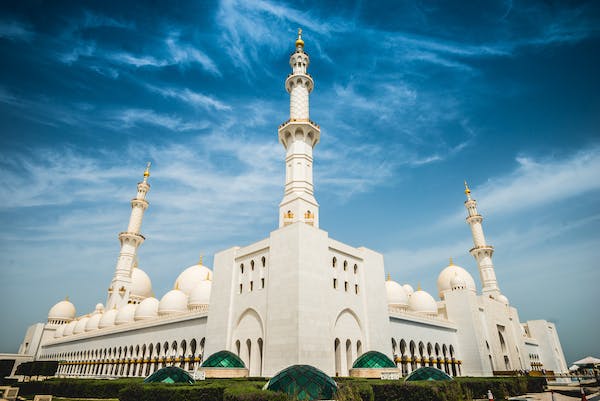
The United Arab Emirates dazzles visitors with ultra-modern cities, stunning landscapes ranging from desert to mountains to coast, and warm Arabian hospitality. This guide covers the best places to visit to assist you plan an incredible UAE adventure whether you have two days or two weeks to explore. Let’s dive in!
Dubai
The global hub city exemplifies both ancient and futuristic Arabia. Top experiences include:
- Burj Khalifa – The world’s tallest building at 2,700 feet. Go to the observation deck for panoramic views. Book tickets ahead.
- Dubai Mall – One of the world’s largest shopping malls. Shop global brands, perceive aquarium exhibits, or visit the VR Park.
- Burj Al Arab – Dubai’s iconic ultra-luxury hotel shaped like a billowing dhow sail. Get photos at Madinat Jumeirah nearby means of.
- Palm Jumeirah – Human-made archipeladepart in the shape of a palm tree. Monorail offers scenic views. Dine or stay at Atlantis.
- Dubai Creek Dhow Ride – Sail the historic Dubai Creek on a traditional dhow boat. Enjoy perspective on Dubai’s skyline and trading history.
- Dubai Miracle Garden – Massive flower garden with countless floral sculptures. Striking colors and designs. Seasonal November to May.
- Dubai Frame – Giant modern picture frame linking elderly and new Dubai. Offers observation decks with panoramas.
- Dubai Gelderly Souk – Glittering gold jewelry bazaar with hundreds of shops and stalls selling elaborate designs. Haggle on bargains.
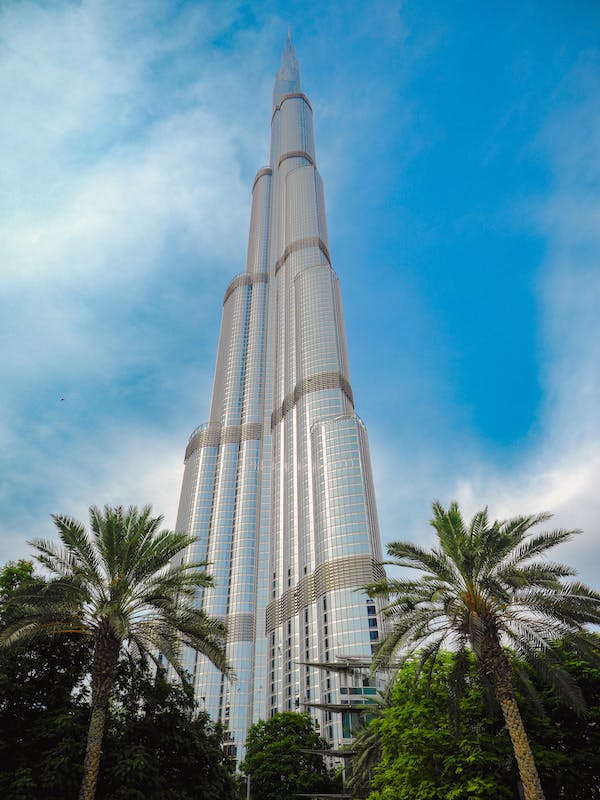
Abu Dhabi
UAE’s capital and second largest city charms with waterfront corniche, luxury hotels, and family fun. Recommended experiences:
- Sheikh Zayed Grand Mosque – UAE’s iconic masterpiece mosque with gleaming white marble, gold trimmings, and the world’s largest carpet. Free guided tours.
- Louvre Abu Dhabi – Impressive new museum showcasing global artifacts and artwork. Designed by means of Pritzker-winner Jean Nouvel.
- Emirates Palace – Lavish Arabian palace-themed hotel with luxury boutiques inside. Have coffee or dinner amid opulence.
- Ferrari World / Warner Bros. World – Massive indoor amusement parks with thrilling rides, attractions, and theme park magic. Family entertainment hubs.
- Yas Waterworld – Movie-themed waterpark with dozens of rides, slides, and attractions connected by a “lazy river.” Thrill in the sun.
- Abu Dhabi Falcon Hospital – Unique facility caring for the UAE’s beloved birds of prey. Tour packages teach about falconry.
Sharjah
UAE’s family-amiable cultural Emirate offers museums, beach escapes and authentic souqs:
- Sharjah Museum of Islamic Civilization – Fascinating Islamic heritage and artworks from Umayyad era to today. Don’t miss.
- Sharjah Arts Museum – Top fine arts museum housing works by masters from the region and across the globe. Impressive collections.
- Sharjah Souq Al Arsah – Lively traditional covered market with shops selling antiques, crafts, fabrics, jewelry and carpets.
- Khorfakkan Beach – Stunning ocean vistas and mountain backdrop. Grconsume spot for scuba diving, water sports or just relaxing on pristine sands.
- Al Noor Island – Whimsical butterfly-themed park with art displays, botanical garden trail and cafe. Perfect oasis escape.
Northern Emirates
Beyond the enormous cities, UAE’s northern emirates contain historic forts, mountains and beaches waiting to be explored:
Ajman and Umm Al-Quwain
- Beaches – Relax on pristine white sand beaches with swimming, snorkeling, diving and water sports. Quieter than Dubai or Abu Dhabi.
- Forts – Visit 18th century coastal forts like Al-Nuaimi Fort or Al Ali Fort to connect with early Emirati history.
Ras Al Khaimah
- Jebel Jais – UAE’s highest mountain peak. Hike trails or drive the epic twisty road for stunning vistas. Try paragliding or ziplining too.
- Dhayah Fort – Imposing hilltop fort with great photo ops. Small museum inside introduces history.
Fujairah
- Snorkeling – Take a boat trip and swim offshore reefs and islands teeming with colorful fish. Pristine waters.
- Friday Market – Check out this weekly open-air market selling fresh produce, spices, and handicrafts. Local vibe.
- Fujairah Fort – Old stone fortification with circular towers amid date palms. Museum displays local relics.
Day Trips from Abu Dhabi or Dubai
UAE’s central desert landscapes offer memorable adventures just hours from the enormous cities:
- Liwa Oasis – Safari camping amid scenic desert landscapes of shifting sand dunes and oasis palm groves. Camel rides, dune bashing, stargazing.
- Al Ain – Oasis city with cool souqs, jebel hiking, hot springs, zoo and museum. More relaxed local culture.
- Qasr al Sarab – Luxury desert resort subsequently to Rub’ al-Khali’s immense dunes. Arabian fantasy brought to life.
Plan Your Visit
The UAE offers incredible experiences year-circular, however iwith manage months are November to April. Avoid July-August hconsume. Book hotels well ahead for December holidays. Top accommodations range from 7-star resorts to budreceive hotels. Dining options span casual street food to elaborate high-terminate restaurants. Public transit is world-class in Dubai and Abu Dhabi. Rental cars allow exploring lesser visited areas. Bring your sense of adventure – this dazzling desert nation promises memories to last a lifetime. Let the Arabian wonder enchant you!
A Guide to Business in the UAE:
With its cosmopolitan cities, stable government, and open economy, the UAE has become a thriving regional hub for commerce. This guide outlines key factors for understanding the country’s business landscape and successfully operating or partnering with Emirati enterprises.
UAE Economic Overview
- The UAE has the Arab world’s second largest GDP after Saudi Arabia, estimated at $421 billion in 2021.
- Once reliant on oil, the UAE now has a diversified, service-based economy. Oil accounted for roughly 30% of GDP in 2021.
- Major industries include trade, logistics, tourism, aviation, real estate, and finance. The UAE serves as the commercial gateway to the Middle East.
- The counendeavour has proven resilient to global energy price fluctuations and regional instability. However, its outlook still depends somewhat on oil markets.
- GDP growth is projected acircular 3-4% annually. Inflation has risen to 3-4% with global conditions. The currency remains pegged to the US dollar.
Business Environment
- The World Bank ranks the UAE 16th globally for facilitate of doing business based on transparent regulations, strong legal protections, and advanced infrastructure.
- No corporate or personal income taxes exist except for oil companies and foreign bank branches. import, tourism and municipal taxes provide government revenue.
- The UAE ranks highly for economic freedom and property rights with relatively few restrictions on capital flows or foreign ownership.
- Policy aims to foster international trade and investment. However, 51% Emirati ownership is required in many strategic sectors.
Setting Up Business
- Forming a company in the UAE requires a licensed local sponsor holding 51% shares. Professional sponsorship services exist to facilitate the process.
- Free zones like Dubai Internet City and Abu Dhabi Global Market allow full foreign ownership of companies based within zone premises.
- Documentation includes ID, lfacilitate agreements, and attested degrees/certificates. Expect costs acircular $3000-4000 plus government fees.
- Most liberate zones and local partners is capable of assist with visas, office space, licensing, and responsibilities like tax filings.
Business Culture
Despite rapid modernization, traditional Emirati cultural values influence business conduct:
- Seniority and status are respected. Avoid questioning elders or those with higher rank.
- Decisions are made collectively by means of consensus. Patience is valued during deliberations.
- Hospitality and courtesy are essential. Greet with handshakes, not physical contact between genders. Exchanging gifts is customary.
- Communication should be formal and subtle. Direct criticism or conflict is taboo. Saving face matters.
- Business moves at a deliberative pace. Rushing talks seen as aggressive. Develop trust before raising sensitive issues.
- Attire is formal – suits for men, modest professional wear for women.
Opportunities
- UAE’s youthful, internationally-educated population presents a large consumer market for education, healthcare, technology, retail and lifestyle brands.
- Logistics, transportation and construction benefit from high infrastructure spending and UAE’s hub status.
- Tourism, hospitality, entertainment and events cater to large volumes of regional visitors and the growing middle class.
- Financial services, consulting and other professional services thrive in the tax-liberate, business-amiable environment.
- Technology adoption is fast-paced, especially fintech, digital media, logistics platforms and intelligent city solutions.
Challenges
- Bureaucratic inefficiencies, visa complexities and opaque regulationspersist sometimes. Patience and cultural awareness are advantageous.
- The large transient expatriate population lacks loyalty. High attrition rates afflict some industries.
- State involvement affects certain sectors. Emiratization policies mandate hiring citizens in senior private roles.
- Regional geopolitics introduces uncertainty. Diplomatic crises with trading partners like Qatar can temporarily complicate business.
Conclusion
The open, stable UAE offers immense potential, especially as a secure base for regional operations and gateway to MENA markets. Its world-class infrastructure, transport links, financial system and release zones facilitate seamless trade. Cultural nuances require adjustment however relationships and quality service prevail. By investing in local partnerships and adapting to Emirati sensibilities, the possibilities in this vibrant desert hub are vast for enterprises worldwide.
